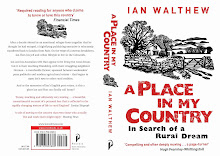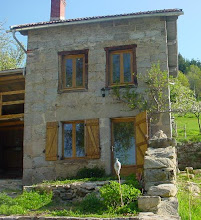


ST. MARTIN
Johns's early story is well known. Born in 1930 in Augusta, Georgia, and raised in Allendale, South Carolina, he received his early education in a one-room schoolhouse in rural South Carolina, where he was sent to live with an aunt who did the teaching.
He said he had wanted to be an artist for as long as he can remember. "I don't know why," he said. "The only logical thing I can think of is that I knew there were such things as artists, and I knew there were none where I lived. So I knew that to be an artist you had to be somewhere else. And I very much wanted to be somewhere else."
http://www.iht.com/articles/2008/02/05/arts/jasper.php

NEW DEHLI
Amit acknowledged the priorities of his social class in this way: "Branding has really taken over," he said. "Everything is looking at what car you're driving, what clothes you're wearing, where your child is going to school."

NEW DEHLI
Her [Sania Mirza's] decision to stop playing in her home country has dismayed India's tennis community, but has also raised deeper concerns about levels of intolerance.
Ramachandra Guha, a historian, argued that her decision was a reflection of "the rising power of bigotry and intolerance in Indian society."
"Male chauvinists have taken exception to her dress; religous bigots have protested a picture that has both her and mosque in the same frame; jingoists have exploded at the (purely accidental) closeness of her feet in another frame to the national flag," he wrote in an article for The Telegraph, a newspaper in Calcutta. Her decision was "a damning indictment of her own countrymen," he wrote.

LETTER FROM EUROPE (Celestine Bohlen)
PARIS
In the past year, French companies announced 317 deals in Western Europe outside France, valued at $89.2 billion, according to Bloomberg data. In the same period, Western European businesses iniatiated 286 deals in France for $67.2 billion.
LONDON
Preventing obesity and smoking can save lives, but it does not save money, according to a new report...
"The EU's proposal to sign a political agreement with Serbia while at the same time sending a mission to break apart our state is a deception aimed at getting Serbia effectively to sign its agreement to Kosovo independence," Kostunica said.
http://www.iht.com/articles/2008/02/05/europe/serbs.php
Dr. Pinstrup-Andersen, for one, decided that the benefits of modified crops outweigh the drawbacks. The public, however, was distracted by the rhetorical crossfire, which had no use for this reasoned, and necessarily imperfect, response to a complex technology
http://www.iht.com/articles/2008/02/05/opinion/edmcwilliams.php
EDITORIAL
When Chinese regulators began to investigate, plant workers tried to cover up what had happened, delaying corrective action. The government has now closed the factory and detained two company officials in a criminal investigation.
The same company is the sole supplier to the United States of the abortion pill known as RU-486.
http://www.iht.com/articles/2008/02/05/opinion/edfda.php

LONDON
Subtlety is no longer in demand, whether it concerns the poetic atmosphere of a landscape or the penetrating psychological study of a sitter. Instant impact is the prerequisite for success. A Provence landscape painted in 1907 at l'Estaque by Braque did very well at £1.25 million, in large part because its strong outlines can be made out from five meters away.
http://www.iht.com/articles/2008/02/05/arts/melik6.php


























































No comments:
Post a Comment